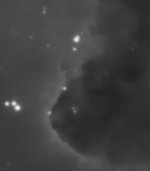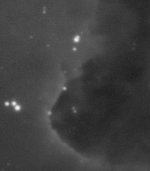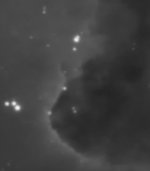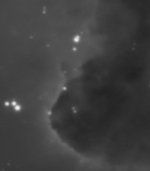This is a comparison of NoiseXTerminator (NXT) vs MureDenoise in PixInsight. Because I'm doing NB imaging all of my images are monochrome. I haven't tried it with color images.
I have been using MureDenoise for some time now to perform noise reduction for my linear images because, up till now, it has donr a better job of noise reduction than I can do any other way. Now I want to test NXT.
The pictures below show a comparison between the two approaches for a linear image for both unstructured background and for target details. I used NXT with Denoise = 0.90 and Detail = 0.15, the default settings.
The pictures on the left show a zoomed in view of the original stacked image.
The middle pictures show the MureDenoise processed images.
The rightmost pictures show the NXT processed images.
UNSTRUCTURED BACKGROUND

DETAILS

I have found NoiseXTerminator (NXT) to be far superior to MureDenoise:

I used NXT on my recent mosaic and was completely satisfied in all aspects. It has made my processing task much easier.
Hope this is useful. I'll be glad to answer any questions if I can.
Steve
I have been using MureDenoise for some time now to perform noise reduction for my linear images because, up till now, it has donr a better job of noise reduction than I can do any other way. Now I want to test NXT.
The pictures below show a comparison between the two approaches for a linear image for both unstructured background and for target details. I used NXT with Denoise = 0.90 and Detail = 0.15, the default settings.
The pictures on the left show a zoomed in view of the original stacked image.
The middle pictures show the MureDenoise processed images.
The rightmost pictures show the NXT processed images.
UNSTRUCTURED BACKGROUND
DETAILS
I have found NoiseXTerminator (NXT) to be far superior to MureDenoise:
- Visually the NXT processed images are much less noisy than the MureDenoise processed images.
- Many of my stacked images have significant noise but NXT has been able to smooth it out every time.
- NXT runs faster than MureDenoise.
- NXT has not left any artifacts (cross-hatched regions) as MureDenoise sometimes does.
- NXT has also done a fine job or retaining the details.
- NXT seems to sharpen the stars a little.
- The amount of noise reduction can be adjusted with NXT, not true with MureDenoise. Very helpful!! The picture below shows examples of two NXT noise reduction levels. The image on the left is the original image. The middle image has Denoise = 70 and the rightmost image has the default setting of Denoise = 90.
I used NXT on my recent mosaic and was completely satisfied in all aspects. It has made my processing task much easier.
Hope this is useful. I'll be glad to answer any questions if I can.
Steve






